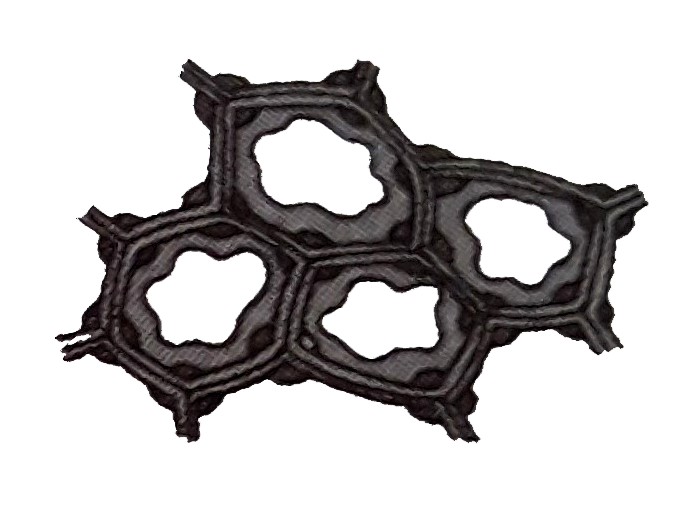Which is living mechanical tissue?
phloem
parenchyma
collenchyma
sclerenchyma
The correct Answer is:C
Step-by-Step Solution:
1. Understanding Mechanical Tissues:
- Mechanical tissues in plants provide structural support and strength. They help the plant maintain its shape and resist various forces.
2. Identifying the Options:
- The question asks for a living mechanical tissue. The common types of mechanical tissues include collenchyma, sclerenchyma, and parenchyma, among others.
3. Evaluating Phloem:
- Phloem is primarily responsible for the transport of nutrients and does not provide mechanical support. Therefore, phloem cannot be considered a living mechanical tissue.
4. Evaluating Parenchyma:
- Parenchyma cells are living cells that mainly function in storage and transport of substances. They do not provide mechanical support, making them an incorrect choice for living mechanical tissue.
5. Evaluating Collenchyma:
- Collenchyma is a type of living mechanical tissue. It consists of elongated cells with irregularly thickened walls, which provide flexibility and support to young plant parts, allowing them to grow and bend without breaking.
6. Evaluating Sclerenchyma:
- Sclerenchyma provides mechanical support as well but is composed of dead cells. Since the question specifies living mechanical tissue, sclerenchyma is not the correct answer.
7. Conclusion:
- The correct answer is collenchyma, as it is a living mechanical tissue that provides support and flexibility to the plant.
Final Answer:
- Collenchyma is the living mechanical tissue.
- Mechanical tissues in plants provide structural support and strength. They help the plant maintain its shape and resist various forces.
- The question asks for a living mechanical tissue. The common types of mechanical tissues include collenchyma, sclerenchyma, and parenchyma, among others.
- Phloem is primarily responsible for the transport of nutrients and does not provide mechanical support. Therefore, phloem cannot be considered a living mechanical tissue.
- Parenchyma cells are living cells that mainly function in storage and transport of substances. They do not provide mechanical support, making them an incorrect choice for living mechanical tissue.
- Collenchyma is a type of living mechanical tissue. It consists of elongated cells with irregularly thickened walls, which provide flexibility and support to young plant parts, allowing them to grow and bend without breaking.
- Sclerenchyma provides mechanical support as well but is composed of dead cells. Since the question specifies living mechanical tissue, sclerenchyma is not the correct answer.
- The correct answer is collenchyma, as it is a living mechanical tissue that provides support and flexibility to the plant.
- Collenchyma is the living mechanical tissue.
Topper's Solved these Questions
- ANATOMY OF FLOWERING PLANTS - PLANT TISSUESBOOK - ICSECHAPTER - ANATOMY OF FLOWERING PLANTS - PLANT TISSUESEXERCISE - REVIEW QUESTIONS (ONE WORD QUESTIONS)
10 Videos
- ANATOMY OF FLOWERING PLANTS - PLANT TISSUESBOOK - ICSECHAPTER - ANATOMY OF FLOWERING PLANTS - PLANT TISSUESEXERCISE - REVIEW QUESTIONS (MATCHING)
1 Videos
- ANATOMY OF FLOWERING PLANTS BOOK - ICSECHAPTER - ANATOMY OF FLOWERING PLANTS EXERCISE - Ncert Exercises (Differentiate Between )
23 Videos
- ANIMAL KINGDOMBOOK - ICSECHAPTER - ANIMAL KINGDOMEXERCISE - Ncert Exercises (Differentiate between )
11 Videos
Similar Questions
Knowledge Check
________is a living mechanical tissue.
A B
B C
C Dboth a and b
Dboth a and bThe living mechanical tissue of a dicot plant is :
AchlorenchymaBsclerenchymaCparenchymaDcollenchyma
Select incorrect feature(s) from (a)-(c) regarding collenchyma tissue. (a) Living mechanical tissue (b) Absent in monocots (c) May be photosynthetic (d) Living non-mechanical tissue
View SolutionWhich tissue provides mechanical support to the young dicot stem and petiole of a leaf ?
View SolutionWhich tissues provide mechanical strength to the plant ? Describe their structure and distribution in the plant body.
View SolutionWhich of the following plants show reduction in vascular tissue and mechanical tissue and cuticle
View SolutionSclerenchyma is mechanical tissue because it has
View SolutionThe acid-soluble pool produced during acid analysis of living animal tissue would contain all of the following, except
View Solution
